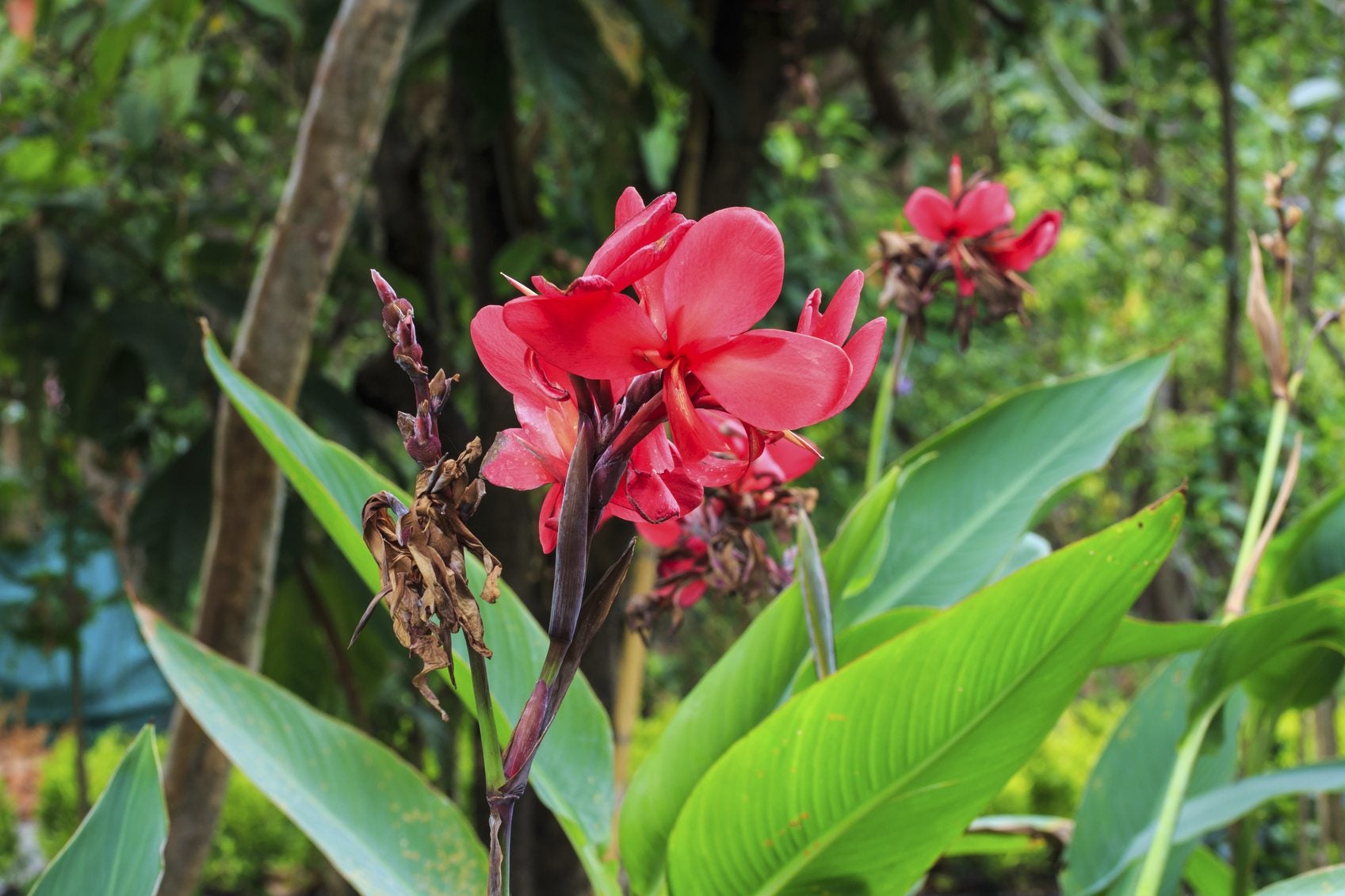Canna Lily Deadheading: Tips For Deadheading Canna Lily Plants


Canna lilies are beautiful, easy-to-grow plants that effortlessly bring a splash of the tropics to your garden. They’re especially welcome to gardeners with very hot summers. Where other flowers shrivel and wilt, canna lilies thrive in the heat. How do you ensure that you get the most out of your canna lilies all summer long? Keep reading to learn more about how to deadhead a canna lily.
Canna Lily Deadheading
Should canna lilies be deadheaded? The jury is somewhat out on the question of both how to and if deadheading canna lily plants is necessary at all. Some gardeners are adamant that canna lily deadheading needlessly kills future blooms, while others faithfully cut spent flower stalks down to the ground. Neither method is necessarily “wrong,” since canna lilies are prolific bloomers. Both methods can result in more blossoms. However, a good compromise, and one used by plenty of gardeners, is to carefully remove just the spent flowers.
Pinching Off Spent Canna Blooms
The main point behind deadheading flowers is to prevent the setting of seed. Plants use up energy by making seeds, and unless you’re planning on collecting the seeds, that energy could be better used by making more flowers. Some canna lilies make big black seed pods, while others are sterile. Leave a flower or two and watch it – if you don’t see seed pods develop, you don’t need to deadhead except for aesthetics. If you are pinching off spent canna blooms, be careful. New buds usually form right next to the spent flowers. Cut off just the fading flower, leaving the buds in place. Pretty soon they should open up into new flowers. If you do happen to remove the buds or even the whole stalk, all is not lost. The plant will quickly grow new stalks and flowers. It will just take a little longer.
Sign up for the Gardening Know How newsletter today and receive a free copy of our e-book "How to Grow Delicious Tomatoes".

The only child of a horticulturist and an English teacher, Liz Baessler was destined to become a gardening editor. She has been with Gardening Know how since 2015, and a Senior Editor since 2020. She holds a BA in English from Brandeis University and an MA in English from the University of Geneva, Switzerland. After years of gardening in containers and community garden plots, she finally has a backyard of her own, which she is systematically filling with vegetables and flowers.